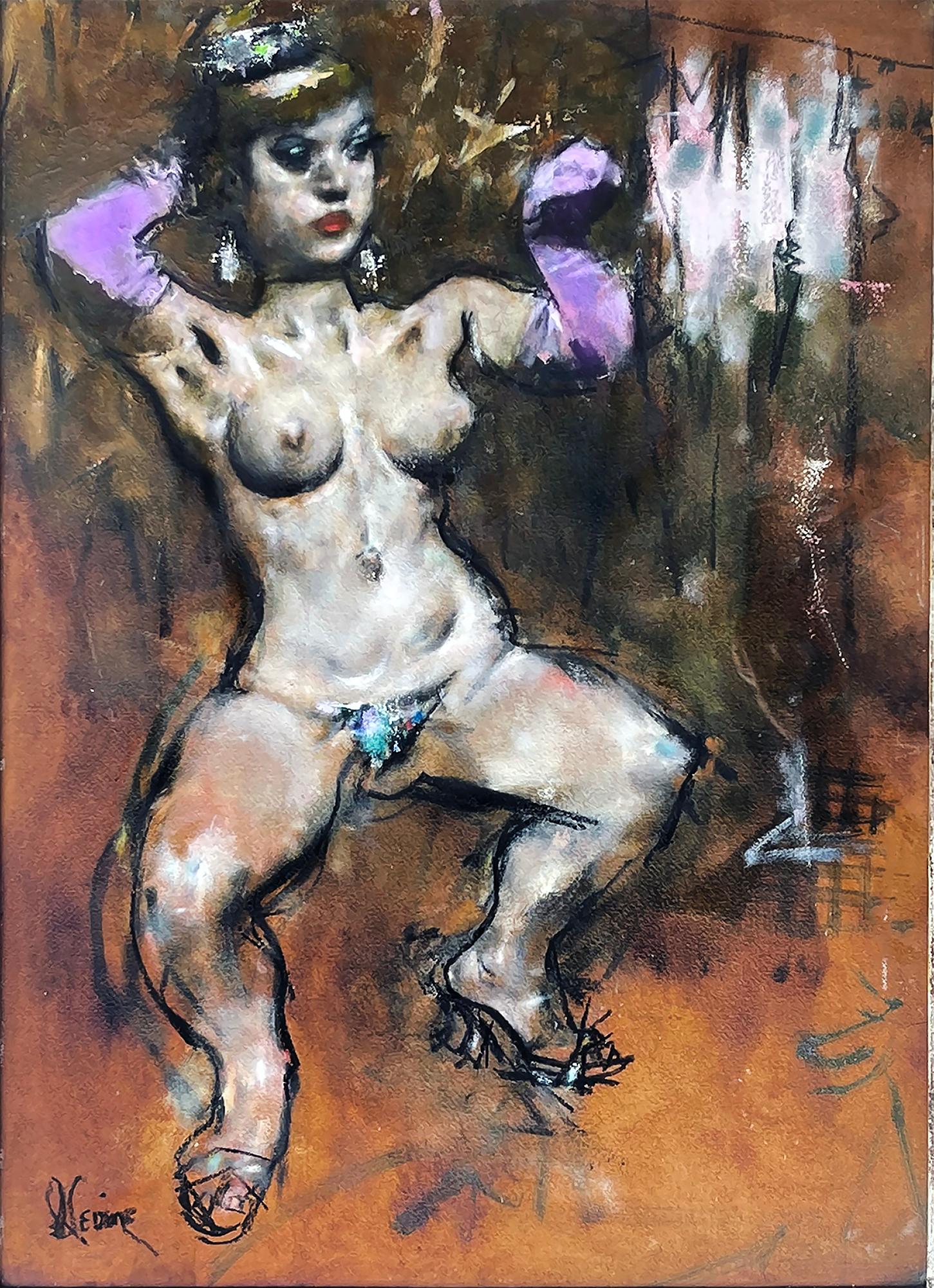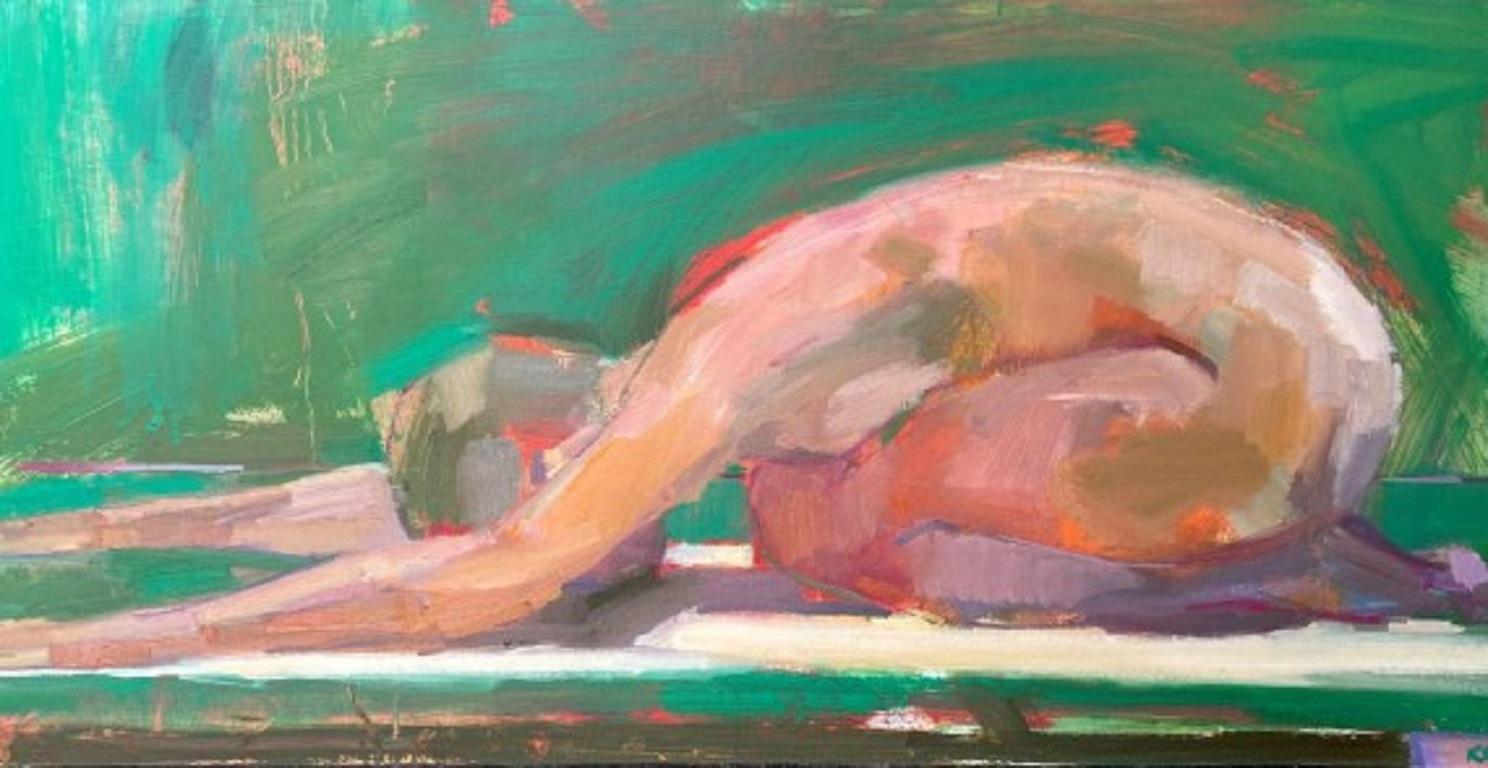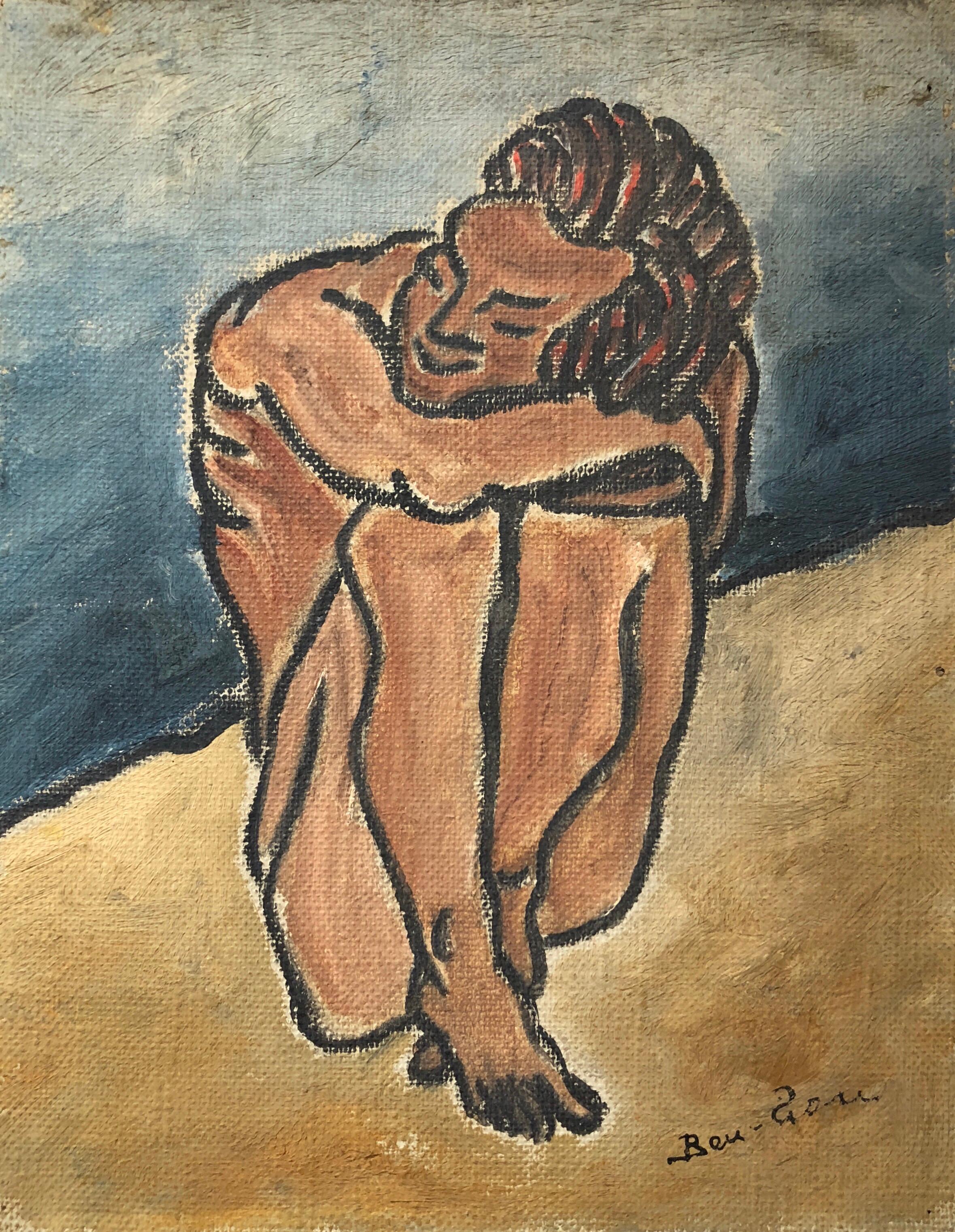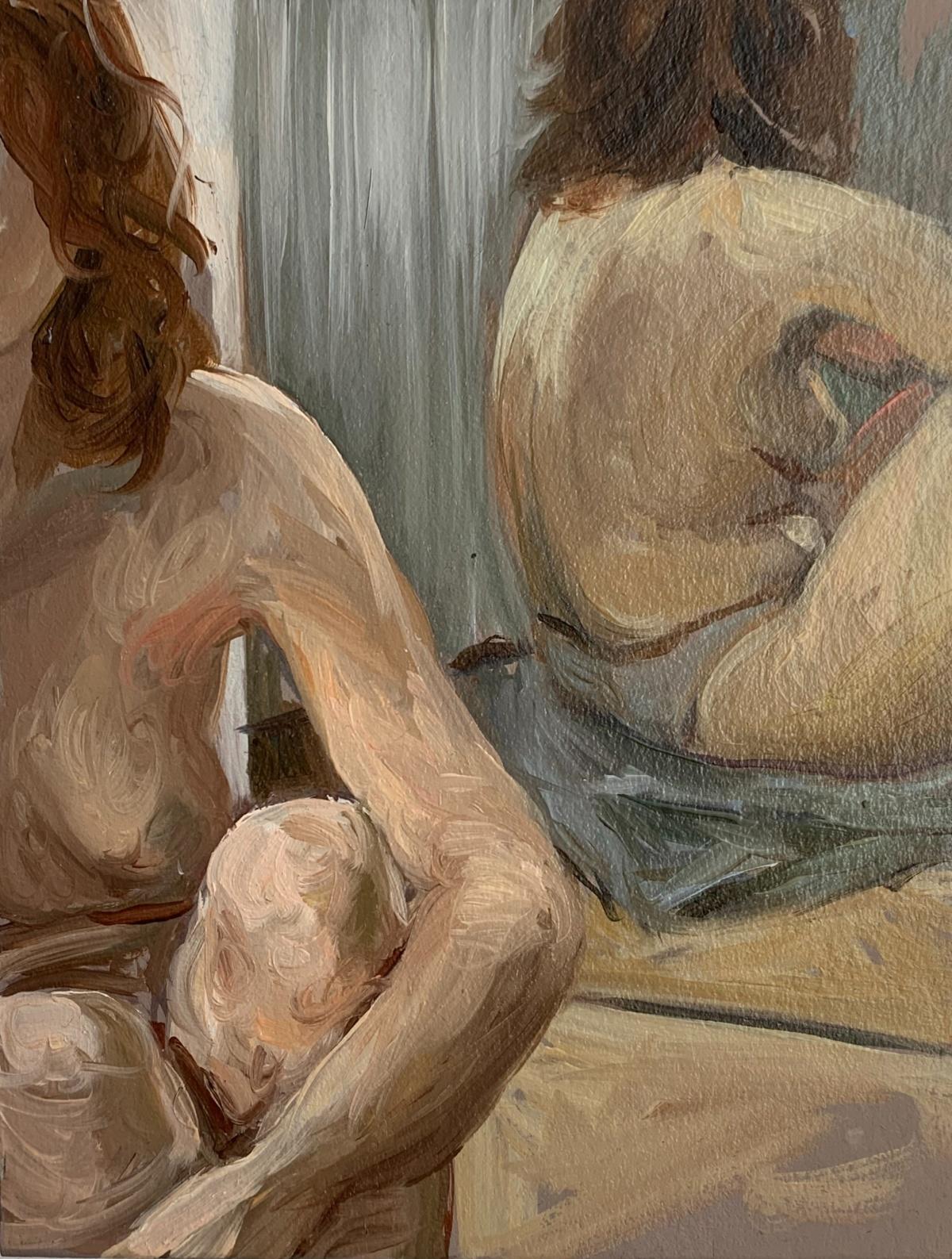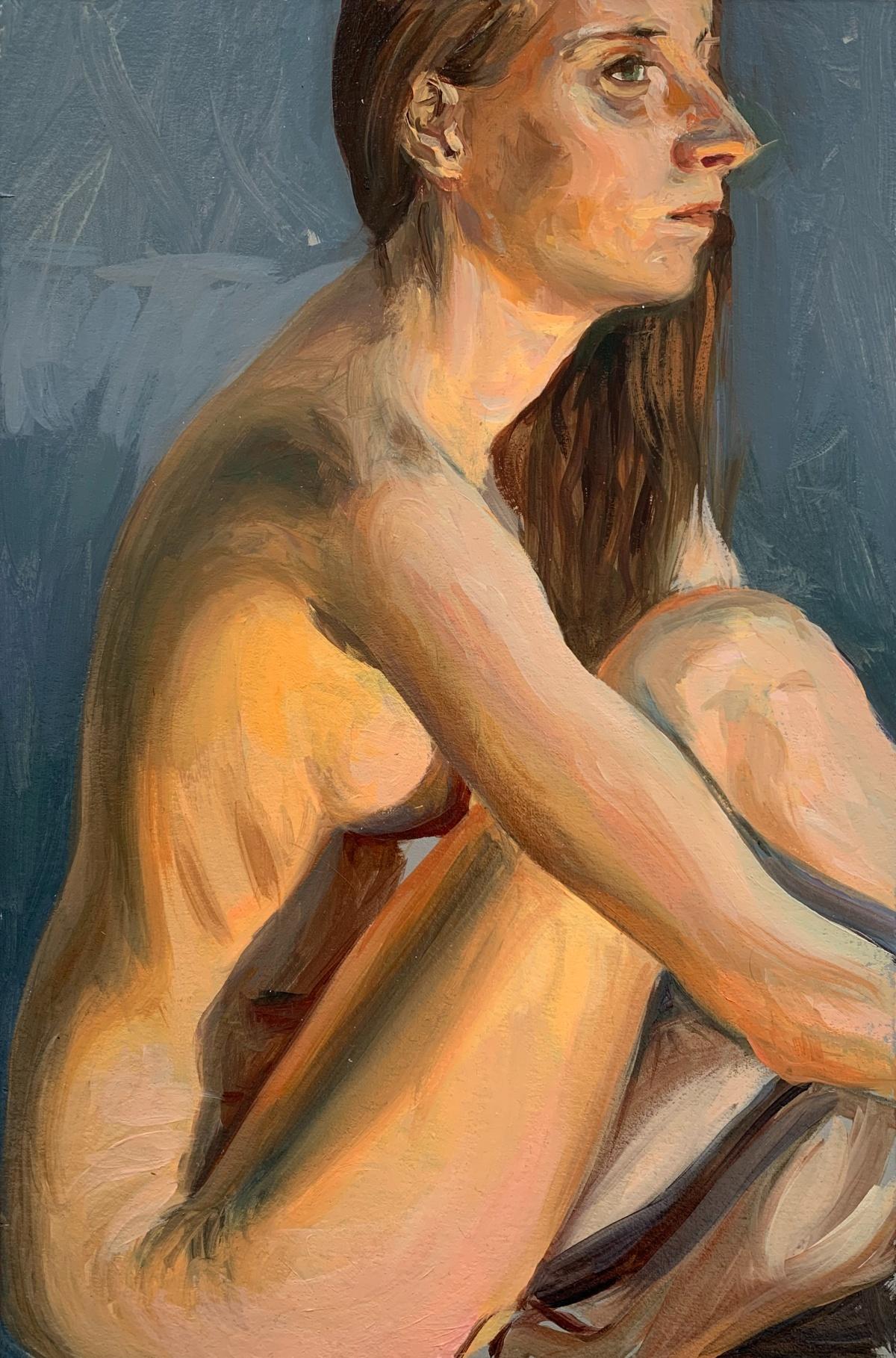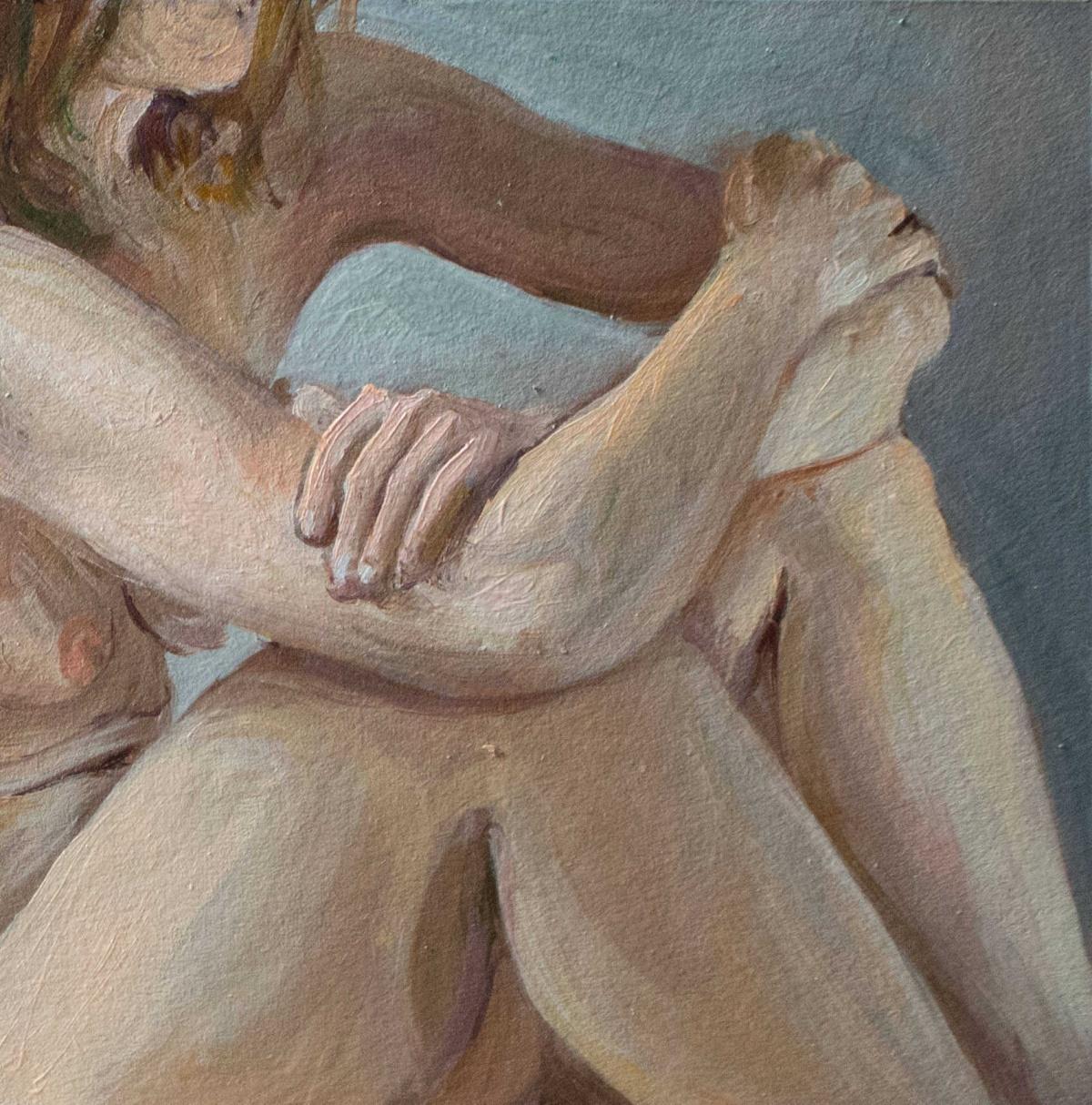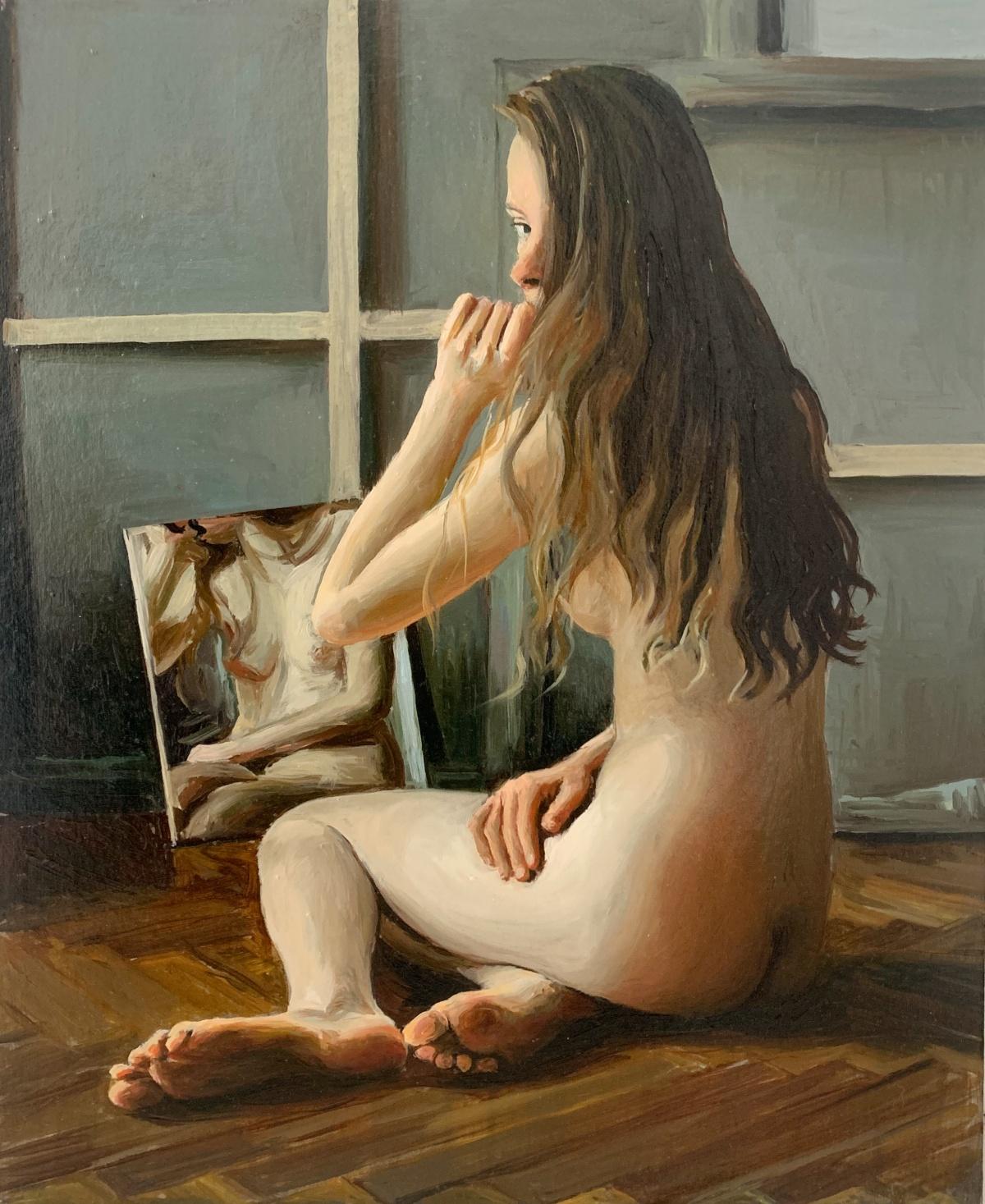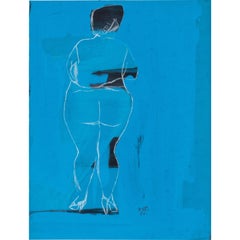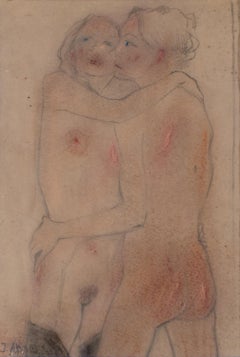Josef Steiner (1899-1977), The White Lady, around 1960/70, Oilpaint on Cardboard
View Similar Items
Want more images or videos?
Request additional images or videos from the seller
1 of 12
Josef SteinerJosef Steiner (1899-1977), The White Lady, around 1960/70, Oilpaint on Cardboardaround 1960/70
around 1960/70
About the Item
- Creator:Josef Steiner (1899 - 1977)
- Creation Year:around 1960/70
- Dimensions:Height: 29.73 in (75.5 cm)Width: 21.66 in (55 cm)Depth: 0.79 in (2 cm)
- Medium:
- Movement & Style:
- Period:
- Condition:
- Gallery Location:Greding, DE
- Reference Number:Seller: 084-13241stDibs: LU130425777321
About the Seller
5.0
Vetted Seller
These experienced sellers undergo a comprehensive evaluation by our team of in-house experts.
1stDibs seller since 2019
More From This SellerView All
- Paul Anton Kaulbach (1864 Hanover - 1930 Berlin) Male NudeLocated in Greding, DEDepiction of a male nude in diffuse architectural scenery. Signed lower right (Paul) Anton Kaulbach (1864 Hannover - 1930 Berlin). Oil on canvas, in gold-patinated frame. Image size:...Category
20th Century Abstract Impressionist Figurative Paintings
MaterialsOil, Canvas
- Josef Steiner (1899-1977), Abstract female nude, dated 1956By Josef SteinerLocated in Greding, DEAbstract female figure on a blue ground. Monogrammed and dated in the lower centre. Josef Steiner (1899 Munich - 1977 ibid.) lived through a Germany in all its facets as an artist. A...Category
20th Century Abstract Expressionist Nude Paintings
MaterialsOil, Cardboard
- Joseph Steiner (1899-1977), Nude drawing, mid-20th centuryLocated in Greding, DENude drawing by Joseph Steiner on paper in pencil and chalk. Monogrammed lower left. Gallery frame and estate stamp. Image size: 30 x 20 cmCategory
Mid-20th Century Abstract Expressionist Nude Paintings
MaterialsChalk, Pencil
- Attributed to C. W. E. Dietrich, Pendant Window Paintings, Oil on WoodLocated in Greding, DEPendant window pictures attributed to Christian Wilhelm Ernst Dietrich, called Dietricy (1712 Weimer - 1774 Dresden). Typical genre depiction of two pretty young ladies leaning out of arched windows. Both ladies are shown open-hearted with white blouses. One painting shows a lady with a red hair band and red cheeks leaning on a low railing and looking at the observer with a slightly glassy gaze. The window opening is framed with vine tendrils and a Mediterranean potted plant on the left edge of the painting. The other painting shows a young beauty with flowers in her hair, leaning loosely out of a window opening with a relief depiction of putti and the same green vine leaves. A red velvet...Category
18th Century Baroque Figurative Paintings
MaterialsWood, Oil
- Sophie Holten (1858-1930), the Parthenon Frieze, London 1901Located in Greding, DEPainting based on the Peplos scene (Block V, eastern Parthenon frieze, ca. 447-433 BC) by the Danish painter Sophie Holten (1858 Skuldelev - 1930 Rosk...Category
Early 1900s Academic Figurative Paintings
MaterialsCanvas, Oil
- Large Painting of a Battle, Figurative Painting, 18th CenturyLocated in Greding, DEAntique battle scene with horsemen in front of landscape scenery. Oil on canvas. Framed in a black wooden frame with a gold patinated moulding. The canvas with strong craquelure. Siz...Category
18th Century Figurative Paintings
MaterialsOil
You May Also Like
- Nandor Vagh Weinmann, Oil on cardboard, Naked Back, 1930sLocated in Saint Amans des cots, FROil on cardboard by Nandor VAGH WEINMANN (1897-1978), France, 1930s. Naked back. With frame: 64x56 cm - 25.2x22 inches ; without frame: 46x38cm - 18.1x15 inches. 8F format. Signed "Nandor V. Weinmann" lower left. In its Montparnasse frame. Very good condition. Born October 3, 1897 in Budapest, Nándor is the older brother of Elemer and Maurice Vagh-Weinmann. He came to Paris to present his work in 1931. He died on December 12, 1978 near Montereau (Seine-et-Marne) following an automobile accident. He is the most colorful of the three “expressionist” brothers. Painter of figures, landscapes, especially open mountains, and bouquets in bright colors. He is also a religious painter and then finds the tragic condition. Born in BUDAPEST on October 3, 1897, Nandor Vagh Weinmann belongs to a profoundly artistic people. Living in the heart of Central Europe where they came from Asia a millennium ago, the Hungarians have preserved a strong ethnic individuality whose mark is their very synthetic, non-Indo-European language. Resistant to secular invasions, they have kept the virtues of a very ancient humanity that have become rare in our modern world, especially since their way of life has remained essentially rural until today. In the arts they know how to express a generous, extreme sensibility and by the poetic verb, by the musical rhythms and also by a popular art of a richness, an exceptional harmony. Until the age of thirty-four, during the decisive years of childhood and youth, Nandor Vagh Weinmann was intimately imbued with popular life and the soul of Hungary. From the capital where his father was a jeweler and had a family of ten children, Nandor was the fifth, he knew first of all the suburbs, the populated districts, the rigors in winter of the cold and the snow. A very mobile existence made him acquainted with all of Hungary, from the Danube to Transylvania, its infinite plains and its wild mountains, its immense villages with ample low houses, and its towns which are still immense villages. The painter is passionate about rustic works, harvest scenes, beautiful folk costumes. Coming into direct contact with the peasants, he learned to know their soul. These contacts gave the artist a direct feeling for popular life and soul, as Millet once understood the peasants of Barbizon and Normandy whose existence he shared. What fascinated Nandor Vagh Weinmann above all were the festivals which enlivened the dreary life of the countryside, the circuses, the merry-go-rounds, the gypsies unleashing orgies of music, light and color. In the party, and especially the Hungarian party, the whole soul of a people, all its energy, its need for movement, for intensity, is expressed in its pure state and realizes the primary and essential form of what is called beauty. And as if melted at the party, there is the infinite steppe where herds of horses and oxen circulate where terrible storms sometimes roar where the seasons unfold their grandiose splendours. The young Nandor Vagh Weinmann nourishes his sensitivity to his inexhaustible shows, both eternal and always new, a sensitivity which very early declared itself that of a painter. Since the age of fourteen he painted, and since then he never stopped doing it. Two of his brothers Maurice, two years his junior, who had a remarkable career similar to that of Nandor and later Elemer who became Maurice's pupil, also devoted themselves to painting, despite family obstacles. And the three brothers united by a common passion worked together in Hungary and later in France. Painting was so much in the blood of the family, as in the past among the Veroneses, the Breughels, the Lenains, the Van Loos and so many other artistic dynasties, that three sons of the Vagh Weinmanns became painters in their turn. One of these, Emeric, son of Nandor, today occupies an important place in the contemporary school. Nandor, at fifteen, was a pupil of the Academy of Fine Arts in Budapest where he worked diligently, then at that of Vienna. He painted many portraits, but also landscapes, compositions and, by his relentless work, managed to live from his brush, although married very young and having to overcome many hardships. He therefore knew the hardships and miseries of life. These strongly impregnated his vision as an artist and explain the thrill of humanity that runs through all his work. A particularly moving experience was reserved for him at the age of twenty. In the hospitals of Budapest he had to paint extraordinary cases, operations, frightful wounds, the deformations to which our poor body is subjected by traumas and physiological decompositions. In these circumstances, it is not a question of gratuitous art, of formal research but of immediate, authentic expressions of our flesh and our being. We know that Breughel Velázquez and Goya had been haunted by the sight of cripples and of madmen Géricault by that of corpses. But life is ultimately stronger than anything, and it is life that Nandor Vagh Weinmann has passionately observed and translated through all the places where he has always painted on nature. Nothing stopped him. It happened to him to paint, for example in front of the mill of Linselles by a weather so cold, that nobody could stay outside, and that he did not leave the place before having finished his work. Because he works constantly on the ground, under the sky, in the silence he loves. His reputation is established. He exhibited at the national fair in Budapest, in the big cities of Hungary Szeged, Szombathely, Veszprém, Kaposvar. In 1931, like all artists in the world, he came to France. But unlike the others, he did not settle in Paris. Because Nandor Vagh Weinmann does not belong to this group of cosmopolitans that we call the School of Paris. He settled in Toulouse, where he remained for a long time with his brothers, and traveled throughout France, eager for new ties, exhibiting in the most diverse cities, in Bordeaux, Marseille, Lyon, Agen, Bayonne, Dax, Tarbes, Grenoble, Nice, Cannes, Strasbourg, Mulhouse, Colmar, Lille. He even crossed borders. He was in Saint Sebastian, in Geneva, and once in Egypt in 1927 where he painted King Fouad...Category
1930s Expressionist Figurative Paintings
MaterialsOil, Cardboard
- Ecstatic Fatigue, abstracted female figure, nudeBy Tom BennettLocated in Brooklyn, NYOil on board. Abstracted, expressionist, figurative. Cool and warm greys with heightened color.Category
2010s Expressionist Figurative Paintings
MaterialsOil, Board
- "Nymphs" two voluptuous female nudes, gestural abstracted figures, clear colorsBy Tom BennettLocated in Brooklyn, NYoil painting on board, an expressionist figurative homage to the work Diana and her Nymphs, by Rubens. Active, direct brushwork, flesh tonesCategory
2010s Expressionist Figurative Paintings
MaterialsOil, Board
- Nude Dancer Burlesque Stripper with Purple Gloves - The Bump -By Jack LevineLocated in Miami, FLA gritty Burlesque Stripper with long purple gloves bumps and grinds with a hard-driving beat. American Social Realist artist Jack Levine paints this se...Category
1970s Expressionist Nude Paintings
MaterialsCharcoal, Oil, Board
- Rosie Copeland, Child's Pose (After the Wave) , Original Nude PaintingBy Rosie CopelandLocated in Deddington, GBRosie Copeland Child’s Pose (after The Wave) Original Nude Painting Medium – Oil on board Board Size: H 38cm x W 76cm x D 0.5cm Sold Unframed Please note that in situ images are pure...Category
21st Century and Contemporary Expressionist Figurative Paintings
MaterialsOil, Board
- American Modernist Oil Painting Nude Male on Beach WPA Artist Group of 10By Ben-Zion WeinmanLocated in Surfside, FLBorn in 1897, Ben-Zion Weinman celebrated his European Jewish heritage in his visual works as a sculptor, painter, and printmaker. Influenced by Spinoza, Knut Hamsun, and Wladyslaw Reymont, as well as Hebrew literature, Ben-Zion wrote poetry and essays that, like his visual work, attempt to reveal the deep “connection between man and the divine, and between man and earth.” An emigrant from the Ukraine, he came to the US in 1920. He wrote fairy tales and poems in Hebrew under the name Benzion Weinman, but when he began painting he dropped his last name and hyphenated his first, saying an artist needed only one name. Ben-Zion was a founding member of “The Ten: An Independent Group” The Ten” a 1930’s avant-garde group, Painted on anything handy. Ben-Zion often used cabinet...Category
Mid-20th Century Expressionist Figurative Paintings
MaterialsOil, Board


